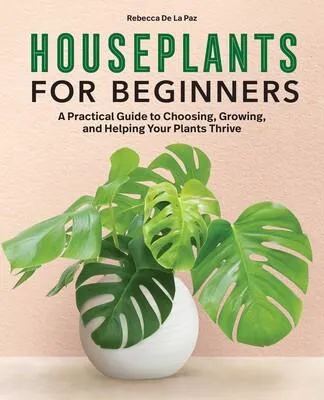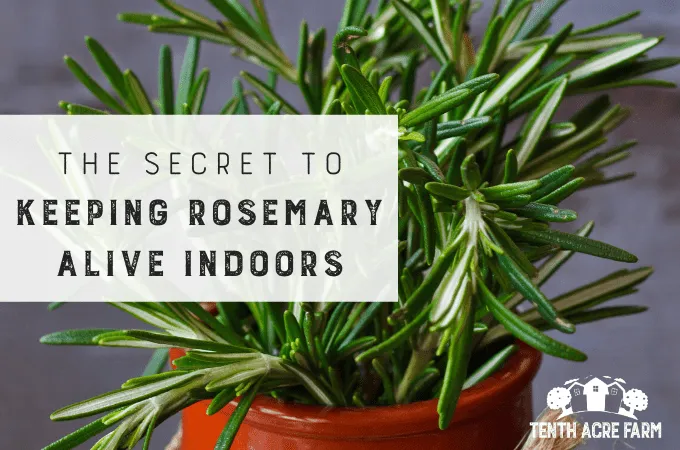A Guide to Choosing the Best Indoor Plants for Your Home in Arizona
If you live in Arizona and want to bring some green indoors, finding plants that can thrive in our dry climate can be tricky. But with the right species and care, you can enjoy beautiful foliage all year round. In this guide, I’ll cover the top indoor plant options for Arizona homes and reveal all you need to know to select and care for them.
What Types of Indoor Plants Do Well in Arizona?
- succulents: Their waxy leaves store water, making them a no-fuss choice for low-humidity environments. Some top succulent picks are aloe vera, echeveria, haworthia, and senecio.
- snake plants: With their thick, stiff leaves, snake plants (sansevieria) are notoriously tough. They’re great at filtering toxins from the air too.
- pothos: Its heart-shaped leaves trail beautifully. Pothos requires infrequent water and tolerates low light.
- peace lilies: Though they prefer humidity, peace lilies can still do well with occasional misting. Their white blooms are a cheerful sight.
- spider plants: Producing offsets, spider plants multiply quickly. They’re low-maintenance find for stress-free care.
From my experience gardening in Arizona, these species have good survival rates indoors because they are adapted to our arid climate. Their low water needs make them practical choices when humidity is lacking.
Tips for Choosing Healthy Indoor Plants
When plant shopping, check for signs of health like:
- Bright green, pest-free foliage with no browned or limp leaves.
- Firm stems that don’t flop over.
- Intact roots without root rot or mushiness.
- A lack of powdery mildew or other diseases on leaves and soil.
Give plants a gentle squeeze to screen for soft spots, which could indicate root issues. Also ask nursery staff for planting and care advice tailored to your conditions. Proper selection goes a long way in indoor plant success here in the desert!
Top Growing Mediums for Indoor Plants in Arizona
When it comes to soil, most indoor plants will thrive in:
- Potting mix: Look for soils specifically formulated for container gardening, which have good drainage and aeration.
- Cactus mix: Its well-draining texture prevents overwatering risks for succulents and other sparse-watering plants.
- Orchid bark: For humidity-loving types like peace lilies, bark mixes retain moisture without becoming soggy.
Avoid garden loam outdoors since it compacts easily indoors. And steer clear of plain perlite or vermiculite unless combined with organic matter. Proper soil drainage is paramount in our dry air!

Watering Indoor Plants Correctly for Arizona
Underwatering is typically a bigger issue than overwatering indoors here. I’ve seen many plants become crispy from insufficient moisture. Some tips on watering wisely:
- Check soil moisture by sticking your finger an inch down. Water only when it’s dry throughout.
- Succulents and cacti may only need water once monthly during winter, more frequently in summer.
- Use tepid tap water instead of colder temps, which can shock roots.
- Avoid water sitting in saucers for long to prevent root rot.
- Consider a pebble tray to boost humidity for plants preferring more moisture.
In general, underwatering is safer than overdoing it in our arid air. But each plant has its own needs, so adjust frequency based on individual signs of thirst or plumpness.
Basic Indoor Plant Care Tips
Aside from watering, focus on:
- Dusting leaves occasionally with a soft cloth to keep pores open for gas exchange.
- Rotating plants every few months so all sides receive light equally and they grow symmetrically.
- Checking weekly for pests like spider mites or mealybugs that flourish indoors. Quarantine and treat as needed.
- Fertilizing only during active growing periods in spring and summer with diluted formulas. Less is more!
- Pruning off any dead, diseased or damaged growth to promote further healthy development.
- Repotting into the next larger pot size when roots emerge from the drainage holes.
At the same time, don’t stress over plants too much! Often the issue is underwatering rather than the care routines. Just pay attention to their needs to keep them looking gorgeous for years to come.
Common Indoor Plant Problems in Arizona and Their Solutions
Despite our best efforts, issues tend to crop up. Here are some common culprits I’ve seen and how to remedy them:
- Underwatering: Address by increasing water frequency, grouping plants on trays, or trying a pebble tray or humidifier.
- Overwatering: Check for soggy soil and improve drainage if needed by adding perlite or switching soils.
- Pests: Rinse off with water, use neem oil or insecticidal soap, isolate if infested. Regular inspections help nip things early.
- Low humidity: Group plants and run a humidifier, especially in winter when heat saps moisture from air.
- Nutrient deficiencies: Add phosphorus for blooms or all-purpose fertilizer during growing season in dilute doses.
- Fungal/bacterial diseases: Prune away afflicted parts, improve air flow, sanitize surfaces between different plants.
With a little troubleshooting know-how, you can remedy whatever ails your indoor plants and keep them looking their best. As the old saying goes: experience is the best teacher!

Final Thoughts on Indoor Gardening in Arizona
Over time, I’ve found indoor plants to be well worth the effort here in the desert. Sharing my home with greenery has real perks like:
– Improving indoor air quality and removing toxins
– Raising humidity levels naturally instead of running a humidifier 24/7
– Providing beauty, color and calmness to domestic spaces
– Teaching responsibility and a connection to nature
– Offering companionship as living beings under one’s care
While it may take trial and error to discover what thrives best, a little TLC nurtures thriving indoor oases even in our arid climate. I hope these insights help you select species ideal for your conditions, avoid common pitfalls, and enjoy the relaxation indoor plants afford. Growing successfully indoors certainly has its rewards – what plant will you start with?
I hope this extensive guide has provided you with all the information needed to choose and care for indoor plants perfectly suited to life in an Arizona home. Please let me know if you have any other questions!
Indoor Plant Factors to Consider in Arizona
| Plant | Light Needs | Water Needs | Humidity | Temperature |
|---|---|---|---|---|
| Snake Plant | Low | Allow soil to dry between waterings | Tolerates low humidity | Tolerates 60-80°F |
| Pothos | Low to medium | Allow soil to partially dry between waterings | Tolerates low humidity | Tolerates 50-85°F |
| Chinese Evergreen | Medium | Keeps soil moist | Prefers medium humidity | Tolerates 60-80°F |
| Peace Lily | Medium | Allow top inch of soil to dry between waterings | Prefers medium to high humidity | Tolerates 65-80°F |
| Succulents | Bright, indirect light | Allow soil dry between waterings | Low humidity tolerant | Tolerates 50-85°F |
FAQ
-
What sorts of indoor plants can thrive in Arizona?
Basically, there are several kinds of plants that do pretty well in the sometimes harsh indoor climate of Arizona. Some good options include succulents, snake plants, pothos vines, peace lilies, and spider plants. These plants can tolerate low water and bright light, which is sort of necessary indoors in AZ!
-
Do I need grow lights for my indoor plants in Arizona?
Even though Arizona gets tons of sunny days, it appears that indoor plants may need some extra light during the winter months. Unless your home gets amazing natural light all day long, grow lights can be helpful to keep your plants happy. According to plant experts, a simple desk lamp with a daylight-balanced bulb may do the trick. On the other hand, a stronger LED grow light could be better for plants that demand higher light.

-
How often should I water indoor plants in Arizona?
The watering schedule for indoor plants here depends on a bunch of factors – like what kind of plant it is, the soil type, and light conditions. Perhaps once every 1-2 weeks is a good guideline. However, it’s best to check the soil before watering and only water when the top inch or two feels dry. Overwatering can be awful for your plants! One trick is to use your pinky finger to test the soil. Is that fair?
-
Should I fertilize houseplants in winter?
During the colder months, when daylight hours are lower and plants are growing less, fertilizing may not be as crucial. Honestly, it’s perfectly fine to skip fertilizer from November to February. However, if your plants are in nutrient-poor soil or being grown with bright lighting, a diluted feeding every few months supposedly can’t hurt. Maybe try it and see if your plants seem to perk up! But don’t overdo it, as too much fertilizer might stress delicate houseplants.
-
What’s the best location in the home for indoor plants?
In general, east-, west-, or south-facing windows provide the brightest natural light that’s ideal for plant growth. However, some plant pals will tolerate lower light from a north window. Stunning monsteras and peperomias reportedly do well in bright indirect light, like a few feet back from an east or west window. On the other hand, weaker plants may need to be right in a sunny windowsill. It really depends on the variety. Trial and error can help you find the perfect spot!
-
Do bugs like spider mites pose a big problem for indoor plants in Arizona?
Unfortunately, yes – pests are fairly common troubles for indoor plants here. Spider mites and their webs can be an especially difficult blight. Perhaps the dry indoor air and radiator/AC vents seem to spread these tiny creepy-crawlies around easily. Regular inspection and quick treatment of troubled plants is important. Some gardeners swear by neem oil or insecticidal soap to safely control mild infestations. But is preventive spraying really worth it in the long run? There appear to be pros and cons to discuss.
-
What’s the best way to transport houseplants safely in my car?
When taking plants from point A to point B in your vehicle, it’s important to protect them from drying winds and bumps. Some tricks I’ve heard work nicely: wrapping pots snugly in trash bags, lowering all windows just a crack, laying plants on the floor instead of seats, and tying them securely in place if needed. You might also try watering thoroughly right before travel. Hopefully your passengers don’t mind sharing legroom with your plant pals! Most importantly, take your time – rushing could risk breaking delicate stems.
-
Is it possible to save an indoor plant that’s looking awful?
Even experienced plant parents seem to kill plants sometimes. If a houseplant is barely clinging to life, there may yet be hope! First, examine the plant for signs of the issue – overwatering, under-watering, pests, etc. Then take appropriate steps like improving care, pruning damaged parts, or seeking expert diagnosis. It depends on the type of plant, but staying optimistic and giving TLC sometimes amazingly brings plants back from the brink. With patience and luck, reviving a struggling plant can be stunningly gratifying. Don’t give up too fast!

